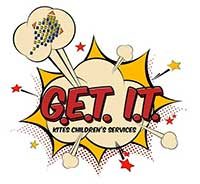Kites believe that the key theoretical perspective that guides treatment should be that of human well-being, rather than that of risk management and relapse prevention in isolation.
This means that the focus to therapy should be on instilling the capabilities to achieve human good in ways that are socially acceptable and non-abusive, and personally meaningful and satisfying.
To this end, alongside the core cognitive/behavioural interventions already outlined, Kites also utilizes Good Lives/Self-Regulation Model (Yates, Kingston & Ward, 2009) theory and thinking within treatment plans, so to aid the young person and their carers in meeting their personal aspirations through safe and healthy means.
The Good Lives Model assumes that all human beings are goal directed organisms who are predisposed to seek certain primary goods, primary goods being states of affairs, states of mind, personal characteristics, activities or experiences that are likely to increase psychological well-being if achieved.
Ten domains have been identified including:
- Life (including healthy living and functioning)
- Knowledge (how well informed one feels about things that are important to them)
- Excellence in play (hobbies and recreational pursuits)
- Excellence in work (including mastery experiences)
- Excellence in agency (autonomy and self-directedness)
- Inner peace (freedom from emotional turmoil and stress)
- Relatedness (including intimate, romantic, and familial relationships)
- Community (connection to wider social groups)
- Spirituality (in the broad sense of finding meaning and purpose in life)
- Pleasure (the state of happiness or feeling good in the here and now)
- Creativity (expressing oneself through alternative forms)
The function of the young person’s offence specific and global behaviour is analysed, and the key goals are identified and then addressed through a Good Lives treatment intervention which facilitates and directs them to meet the identified needs through healthy means.
The treatment plan provides approach goals to young people to offset identified risk factors so to improve self-efficacy, autonomy and self-agency.

